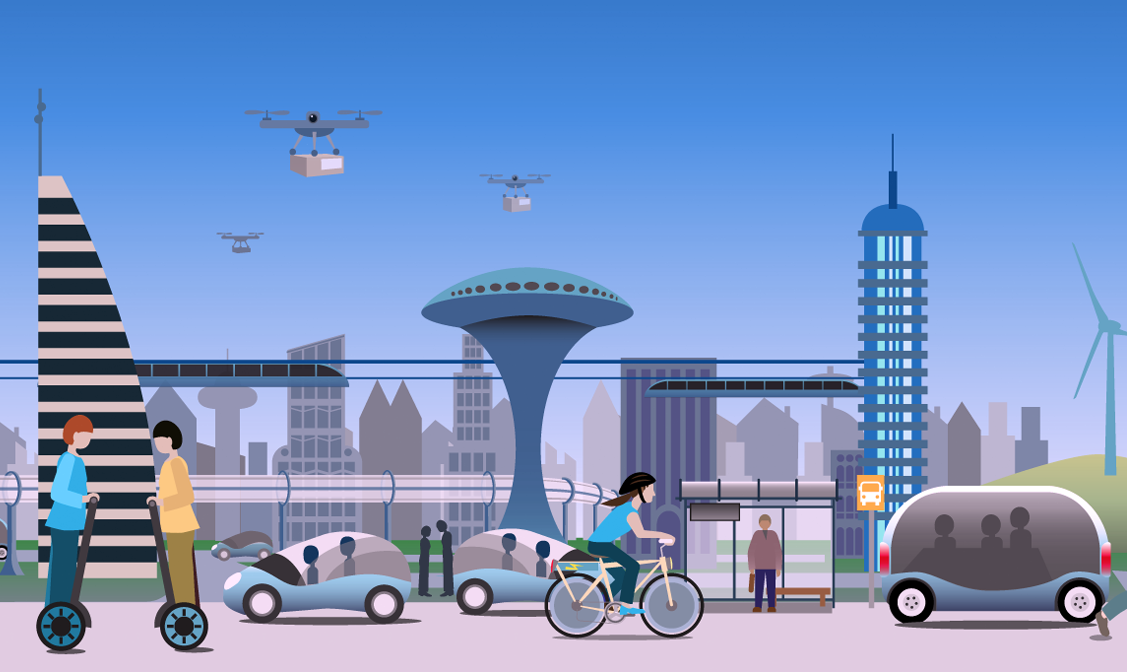

What Will Mobility Be Like in the City of the Future?
A Conversation with Massimo Ciuffini
Architect and Urban Planner
Member of the Freedom of Mobility Forum Advisory Board
June 14, 2023
Following our previous article on the “15-minute city” concept, the Freedom of Mobility Forum had the opportunity to talk with Architect and Urban Planner Massimo Ciuffini.
Let’s discover together how he envisions mobility in the city of the future.
As an urban planner, is the “15-minute city” concept good or bad news in terms of climate change?
The novelty of the “15-minute city” concept lies in making the public understand in a very simple and understandable way that the way people move and how a city takes shape are intimately and inextricably linked, and this relationship works in both directions. It is crucial to establish and communicate a vision of a city that not only helps to reduce greenhouse gas emissions, but also represents a model of livability. If cultural models change, the market seeks to intercept people’s new needs, and politicians do the same.
As a citizen, how is the “15-minute city” concept in terms of freedom to move?
I don’t think there’s a relationship between the concept of the “15-minute city” and the limitation on citizens’ freedom of movement. Providing each part of the city with a sufficient level of shops, services, parks and gardens dedicated to the daily life of residents is not a new concept. It is a goal that urban planners have always pursued, often without success. I would like to remind readers that the overcoming of zoning dates to the end of the 1970s. This goal has always been conceived to guarantee equal opportunities for everyone, regardless of their place of residence, not as an obligation of confinement. The least realistic and most difficult aspect of achieving the concept of the “15-minute city” is the location of jobs. Even though many jobs can be done remotely, people will want – or most likely need – to work where they can find the best economic and employment conditions.
We see few examples of the “15-minute city” concept implemented. What do you think are the main roadblocks and / or opportunities to implementing the “15-minute city” concept?
As we discuss the concept of the “15-minute city”, it is worth noting that Italian cities, for example, are experiencing a significant reduction in local shops and services. On the contrary, there is a growing trend towards the creation of large specialized commercial areas located in peri-urban areas or the use of online commerce and so on. Remote work or co-working can play a positive role in the “15-minute city” model, but they can also have the opposite effect. Many people who no longer need to travel daily to go to work could move away from the city, where property values are lower and they can buy larger houses at lower prices. There is no evidence that these same people will not move more than before and perhaps more by car.
From my point of view, the main roadblocks to implementing the concept of the “15-minute city” remain the same as always. If the modal share of personal cars dominates urban mobility, the city will be built for cars. If the city is built for cars, the modal share of cars will dominate urban mobility. To break this vicious circle, it is necessary to intervene simultaneously on both poles of this interaction. My two cents as an architect, from my perspective all the planning criteria codified at the beginning of the 20th century, consolidated in the Charter of Athens,(1) should be definitively thrown in the bin. In a nutshell, these principles require a clear separation of the different functions within the city and the creation of large open spaces within the urban fabric, crossed by large urban highways. These principles are influencing many of the laws that still regulate land use practices today, at least in Europe. I believe, for example, that there is a need to remove minimum parking requirements and review restrictions on the compactness and density of the built environment.


The social acceptance of the “15-minute city,” I believe, is not a problem, on the contrary. On the other hand, financial costs can only be high, and nowadays, this represents an insurmountable obstacle, at least until some economic dogmas, especially in Europe, are questioned. It is worth remembering that the “60-minute city (by car)” was shaped in “The Glorious Thirty”* with colossal investments both public and private.
* 30 years of extraordinary growth in the western world after the Second World War. French economist Jean Fourastie (1907-1990) coined the expression “the glorious thirty years” to describe the deep transformation of the years 1945-1973: peace and stability in Western Europe and the English-speaking world, most countries consolidate modern democracies with generous welfare states (main exceptions: Spain and Portugal), fast economic growth, full employment, shorter hours of work, and lower income inequality, mass consumption of durable goods.
As an architect and urban planner, how do you imagine the decarbonized city of the future and how will humans move inside those cities? How will they reach those cities from outside? How will they leave those cities?
It is difficult to predict what the decarbonized city of the future will look like in terms of mobility. It all depends on how people decide to shape their future and which political and social visions will prevail in the coming years. Each technical driver of change can have very different outcomes. Take autonomous car technology, for example: it could be the ultimate end of personal mobility or its triumph. Either way, I believe that in the cities of the future we will move slowly but with greater fluidity and pleasure than today. We will use more “gentle” and less “aggressive” vehicles than the current ones and, whenever possible, we will seek to be transported rather than drive.
